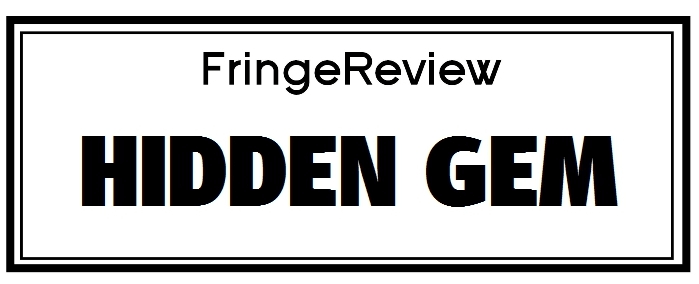FringeReview UK 2019
Pictures of Dorian Gray
Stephen Joseph Theatre Scarborough, Jermyn Street Theatre, Creation Theatre

Genre: Adaptation, Drama, Mainstream Theatre, Short Plays, Theatre
Venue: Jermyn Street Theatre
Festival: FringeReview UK
Low Down
Pictures of Dorian Gray, adapted by Lucy Shaw is directed by Tom Littler. There are four variations of the four-strong cast. Set and lighting’s by William Reynolds, sound by Matt Eaton, costume Emily Stuart, movement by Julia Cave.
Review
There’s no such thing as a moral or immoral version. Versions are well-realized or badly-realized: that is all. The title’s plurality looks slippery, quicksilvery, an 1890s silverprint. So it proves. Adapted by Lucy Shaw Pictures of Dorian Gray proclaims version. It isn’t just about the number of Dorians you might see – even in two performances on one day. There’s two mirrors, two portraits too, two female and two male actors.
It’s not strictly gender-fluid though. Apart from Dorian (an androgynous name anyway) there’s Lady or Lord Henry Wootton, Adrian or Adriana Singleton, and other roles like Sybil Vane are gendered ‘she’ or ‘he’ with the actor which works beautifully. Elsewhere though the logic creaks: James Vane keeps ‘James’ and shifts to ‘she’ when taken by Helen Reuben and ends up that rarest thing: an 1890s tattoo’d woman sailor. A bit of gender-fluidity there wouldn’t lead to such contortions. And Reuben can scowl a pretty mean Pirate Jenny.
The actors not only take on key role (Sybil Vane’s is briefer) but intercut with Wilde off-cuts, where Shaw ingeniously juxtaposes his bon-mots with others and indeed lines from dialogue, so the continual flow is a glittering Wildean symphony muttering Caliban and (as often here) looking in mirrors. Actors drift through and at several points perform a sarabande, once with the books Dorian binds in different colours, but with the same Baudelaire Fleurs Du Mal text. Another Greek-in-Dorian mode gift from Henry.
This story of a young man who sells his soul so his portrait, not he ages, then falls into depravity, has endlessly fascinated adaptors. Its self-reflexivity and endless renewal, despite the 1890s frame with limited expansion, shows no signs of abating. Like the apparent narcissism of the 1890s, it’s a part of us.
Directed by Tom Littler, the most striking feature of this production is indeed the role-changes. With four variations A-D, I saw A and B. In both, Stanton Wright’s Dorian and Helen Reuben’s artist Basil Hallward remained unaltered (in C and D they swap over). Wright seems ideal in the part: the right touch of self-regard hardening to cruelty, but with twitches not kicks till his great brutal act. And his diction owns the right adamantine neutrality. Reuben in this part would I’m sure prove worth seeing: her diction and poise owns a stillness and melancholy. Wright seems a natural as Dorian but I never saw him as Basil.
Richard Keightley’s languidly epigrammatic tempter Lord Henry Wootton in A, is replaced by Augustina Seymour’s Lady Henry in B – where Keightley’s hovering homoeroticism (a delicate butterfly kiss) is replaced by Seymour’s Liasions dangereuses one. It’s another straight swap and they’re both playfully fine: Seymour in particular suggests Wootton might be well-taken by a woman in another production.
In A though, she’s Sybil Vane, the actor destroyed by Dorian’s rose-leafed curl of rejection; Seymour shifts from commentator in smoky RP to Sybil’s enraptured then devastated 17-year-old. In B it’s Keightley’s adolescent boy now a vulnerable Sibyl; he throws off his Lord Henry’s youthful amoralist and plunges into a vulnerable, terrified boy, more than wild with all regret. In C Keightley’s back to being Wootton as in A and Seymour similarly returns to being A’s Vane; in D these two swap roles returning to their B positions.
Set and lighting’s by William Reynolds, with two mirrors, one set on a map stage left (Dorian’s corner) one on a pulley (Basil’s) reflecting a trough of water as vehicle for Narcissus, lit with blue and latterly red neon with everything in between, bruised with distortive rainbows of vice. Shimmering with refraction, stagnating, promise immersive ablution and drowning redemption. Reynolds one might say has drunk deep in myth and the Christo-mythopaeic elements of Wilde’s tale. Everything else is a metallic blue-grey scumble.
Sound by Matt Eaton is immersive: eerie tweaks drift out all round whilst Chopin’s Op 55 Nocturnes and fragments striate the faintly banshee-like ambience. Costumes by Emily Stuart strikingly garb Dorian and Henry in black with gold embroidery with more subfusc for the others. That sarabande and other movement is accomplished in a tight frame by Julia Cave.
The theatricality of that trough of water is at its most striking latterly, with the scene between painter and sitter confronting its last stages; and the final one where a little of the point (the last lines identifying Dorian by his rings), but none of the symbolism, is lost.
There are occasional longeurs in the choral movement, attractive and pointed as it is, which eddies the storytelling. It perhaps delights in itself a little too much, though isn’t that the point? Not all the qualities and terror of the original can be contained in such a fluid action – it’s more revealing than wholly revelatory. The drama itself never rises to a climax as in the novel, we don’t quite feel for the characters. In a Wildean sense they amuse us. But it remains fresh with new things to say (on performative gender particularly) and it’s immersively engrossing: a ballet of a drama of a story.
The actors are beyond praise learning two roles and two sets of choruses and doing so convincingly. Perhaps there should have been a vote on the best combo. If possible you should see two widely differing versions, but that’s Wildean extravagance. Be surprised.


















































